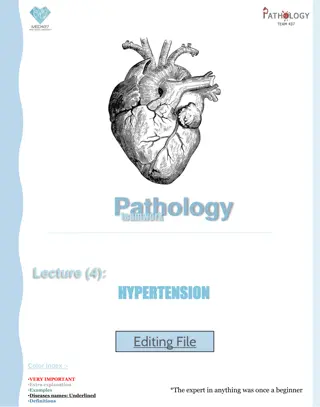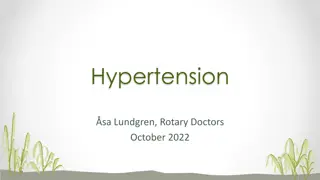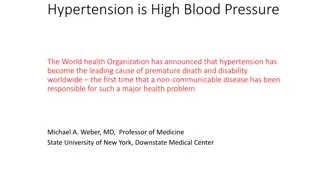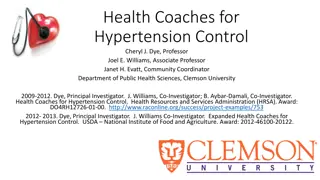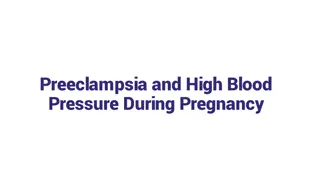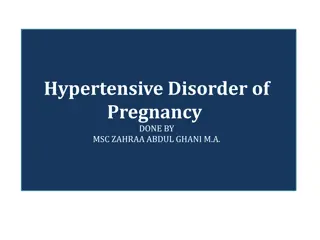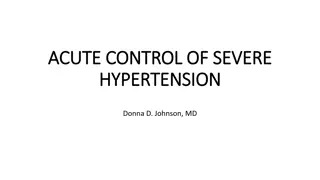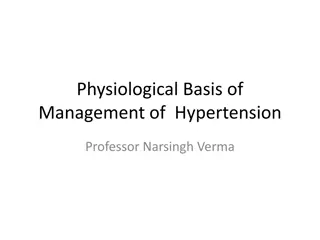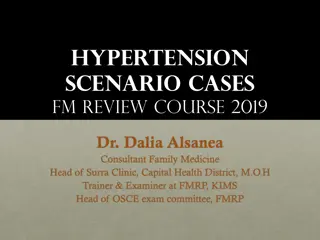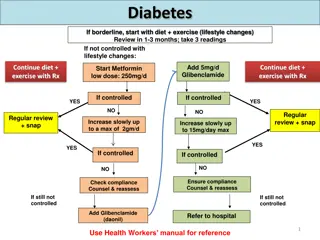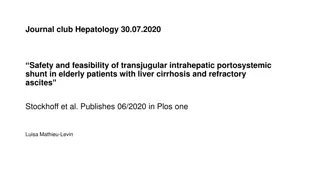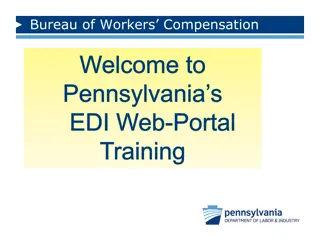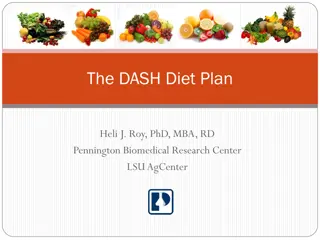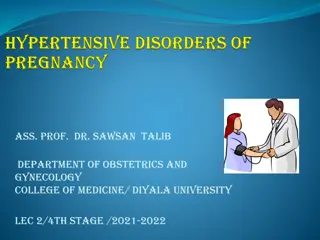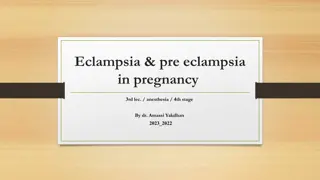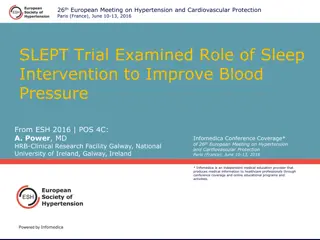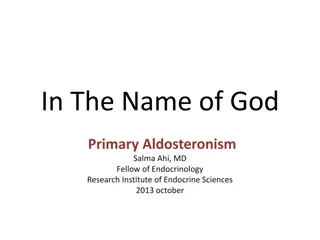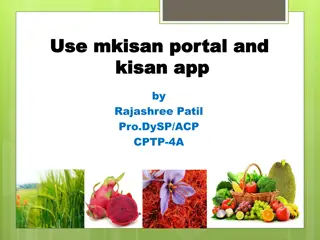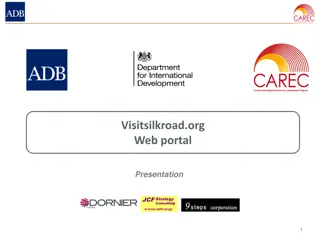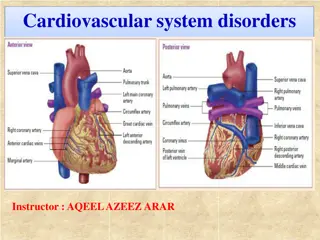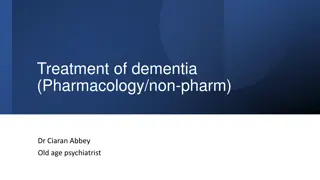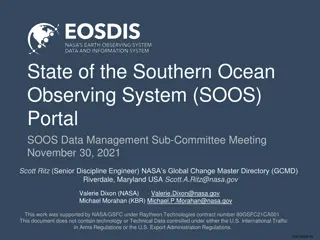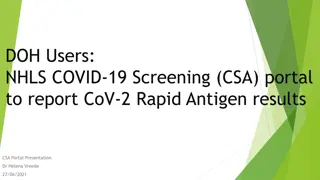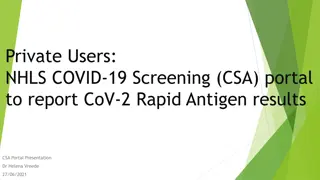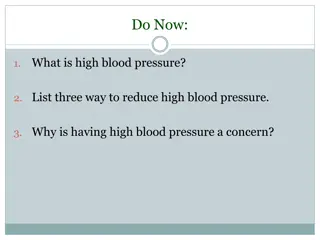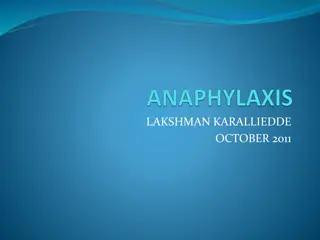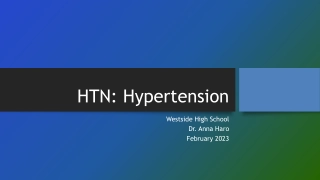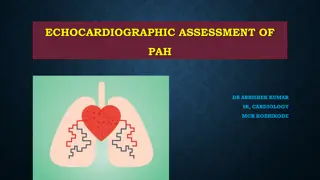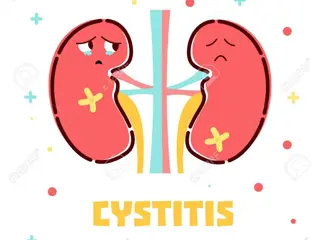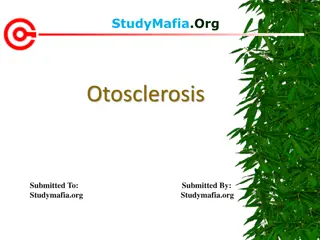**Understanding Portal Hypertension: Causes, Symptoms, and Treatment**
Portal hypertension is a serious condition often associated with cirrhosis. Causes include cirrhosis and non-cirrhotic conditions. Symptoms range from asymptomatic to complications like variceal hemorrhage, ascites, and splenomegaly. Preventive measures, such as nonselective beta-blockers, are crucial. Treatment for bleeding includes hemodynamic resuscitation and prophylactic antibiotics. Salvage treatments like TIPS or surgery may be considered for those who fail initial therapies.
Download Presentation

Please find below an Image/Link to download the presentation.
The content on the website is provided AS IS for your information and personal use only. It may not be sold, licensed, or shared on other websites without obtaining consent from the author. Download presentation by click this link. If you encounter any issues during the download, it is possible that the publisher has removed the file from their server.
E N D
Presentation Transcript
PORTAL HYPERTENSION MAZEN HASSANAIN
CAUSES Cirrhosis Non-cirrhosis
SYMPTOMS Asymptomatic Complications Gastroesophageal varices Ascites Splenomegaly Underlying disease
BLEEDING PREVENTION Approximately one-third of all patients with varices will develop variceal hemorrhage A major cause of morbidity and mortality in patients with cirrhosis AASLD RECOMMENDATIONS Recommendations for prevention of variceal bleeding have been issued by the American Association for the Study of Liver Diseases
In patients with cirrhosis who do not have varices, no Rx In patients who have compensated cirrhosis and small varices that have not bled but have criteria for increased risk of hemorrhage (Child B/C or presence of red wale marks on varices), nonselective beta blockers In patients with medium/large varices that have not bled, nonselective beta blockers (propranolol or nadolol) is recommended or undergo EVL In patients receive beta blockers, a follow-up EGD is not necessary. If a patient is treated with EVL, it should be repeated until obliteration. EGD performed one to three months after obliteration and then every 6 to 12 months to check for variceal recurrence.
TREATMENT OF BLEEDING Initial therapy: hemodynamic resuscitation, prevention and treatment of complications Prophylactic antibiotics, preferably before endoscopy (although effectiveness has also been demonstrated when given after). Suggest intravenous ceftriaxone (1 g IV) or Cipro (400 mg IV BID) UGD should be performed for diagnosis and possible treatment Suggest terlipressin in countries where it is available and somatostatin or octreotide (50 mcg bolus followed by 50 mcg/hour by intravenous infusion) where terlipressin is unavailable
CONTINUE Salvage treatment TIPS (transjugular intrahepatic portosystemic shunt) Surgery is one with well preserved liver function who fails emergent endoscopic treatment and has no complications from the bleeding or endoscopy. The choice of surgery usually depends upon the availability, training, and expertise of the surgeon. Although a selective shunt has some physiologic advantages, it may significantly exacerbate marked ascites. Thus, a portacaval shunt would be preferable in patients with marked ascites
SHUNT OPERATIONS CAN BE CATEGORIZED AS FOLLOWS: Nonselective those that decompress the entire portal tree, such as portacaval shunts Selective those that compartmentalize the portal tree into a decompressed variceal system while maintaining sinusoidal perfusion via a hypertensive superior mesenteric-portal compartment, such as a distal splenorenal shunt Partial those that incompletely decompress the entire portal tree and thereby also maintain some hepatic perfusion Nonshunt operations generally include either esophageal transection (in which the distal esophagus is transected and then stapled back together after varices have been ligated) or devascularization of the gastroesophageal junction (Sugiura procedure).
Maintain a hemoglobin of approximately 8 g/dL. Short-term (maximum seven days) antibiotic prophylaxis should be instituted in any patient with cirrhosis and GI hemorrhage. Pharmacologic therapy (somatostatin or its analogue octreotide) should start as soon as bleeding is suspected and continue for 3-5 days after confirmation. Upper endoscopy, performed within 12 hours, should be used to make the diagnosis and to treat variceal hemorrhage either with endoscopic variceal ligation or sclerotherapy. TIPS is indicated in patients in whom hemorrhage from esophageal varices cannot be controlled or in whom bleeding recurs despite combined pharmacological and endoscopic therapy. Balloon tamponade should be used as a temporizing measure (maximum 24 hours) in patients with uncontrollable bleeding for whom a more definitive therapy (eg, TIPS or endoscopic therapy) is planned.
LIVER RESECTION Causes: Benign : adenoma Malignant : HCC, CC, CRCLM Indications Outcomes What's resectable How much



